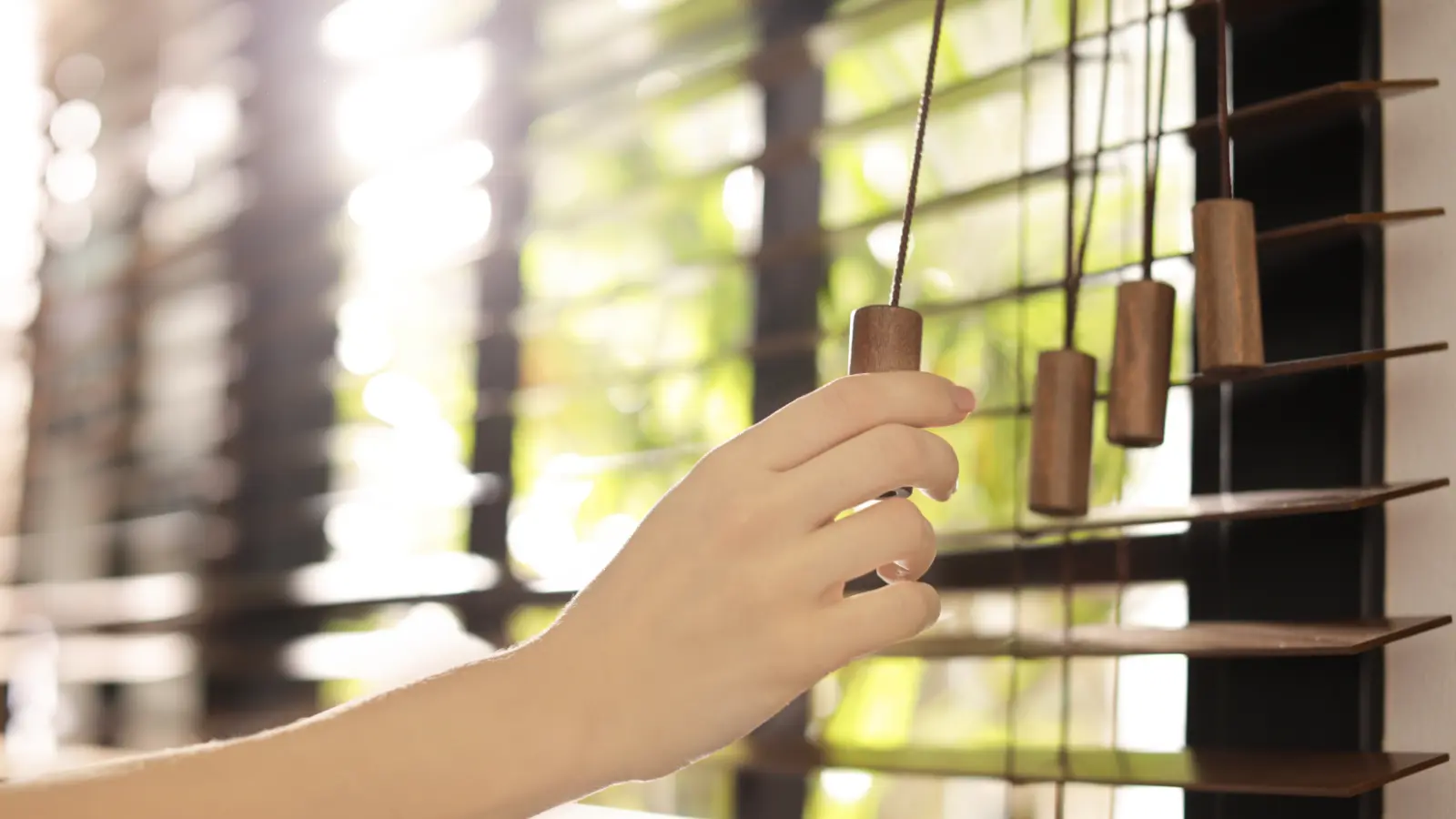Cordless Vs. Corded Window Blinds: Settling the Argument

Cords can be a hassle.
Cutting the cord is a sign of independence. We cut the cord on our journey to adulthood. When pocket-sized cell phones took over the market — woohoo! — no cords! What freedom! We could answer calls almost anywhere, including the gym (much to the annoyance of anyone working out nearby).
Cordless blinds were developed in response to the potential risks of corded blinds to children and pets.
Window blinds first appeared in England just before the American Revolution. Cordless blinds made their debut in the early 21st century. So newer is better, right? The new technology should prevail!
Not necessarily, because sometimes traditional corded blinds might be a more practical choice. Let’s explore the pros and cons of each option.
How Do Cordless Blinds Work?
Raising & Lowering
- Cordless window blinds have an internal spring mechanism or a tension system within the headrail or top rail of the blind.
- To raise the blinds, gently lift the bottom rail or slats to your desired height. The internal mechanism within the headrail will hold the blinds in position.
- To lower the blinds, pull them down to your preferred level, then release them. The internal mechanism will secure the blinds in place.
Locking Mechanism
- Cordless blinds feature a locking mechanism that holds the blinds securely at the chosen height. This mechanism disengages when you raise or lower the blinds.
Bottom Rail or Handle
- Some cordless blinds are designed with a bottom rail that serves as a handle, making it easy to raise and lower the blinds without requiring cords.
Tension Adjustment:
- Some cordless blinds offer a tension adjustment feature, allowing you to customize the effort to raise and lower them.
Child Safety
- Cordless window blinds are engineered with child safety in mind. Their cordless design eliminates the risk of entanglement that corded blinds may pose, making them a safer option for homes with children or pets.
Benefits of Cordless Blinds
Why are cordless blinds so fabulous?
- Sleek and Clean Appearance: No cords means no tangled mess hanging beside your windows.
- Child and Pet Safety: Cordless window shades eliminate the risk of entanglement for children and pets.
- Ease of Use: Gently pull down or push up, and the blinds will respond.
- Child and Pet Safety: Cordless window shades eliminate the risk of entanglement for children and pets.
Benefits of Corded Blinds
Before you write off corded blinds, know they have unique benefits.
- Durability: Corded blinds tend to last a little longer. There are fewer moving parts, and cords can handle more weight than the internal mechanisms in cordless blinds.
- Cost-effective: Corded blinds are generally less expensive than their cordless counterparts. So, if budget is a concern, corded blinds might be better for you.
- Suitable for Large Windows: Corded blinds are great for large windows as they provide the mechanical advantage, enabling effortless raising and lowering of heavy blinds.
- Precise control: With corded blinds, you can control the height of your blinds to the exact level you want. It’s all in your hands!
- Accessibility: High-up windows can be a problem with cordless blinds — you may not be able to reach them. Cord systems eliminate this issue, ensuring you can always control your blinds.
Corded or Cordless: Which Is Right for You?
Your budget, safety concerns, and the size and placement of the window you hope to cover may dictate your choice of blinds.
In some cases, corded blinds are the only option unless you’re willing to consider other window treatments, like shades.
When windows are too high for easy access or exceptionally wide, a cordless system won’t work. If your budget allows it, and your heart is set on cordless blinds, then motorized and automated blinds may be your best bet.
Cordless blinds are the clear choice in homes with toddlers, pets, and average-sized windows. They’re easy to operate and adjust, and the blinds look clean and beautiful.
Aero Shade Custom Window Coverings carries all styles and types of blinds. We invite you to view and test these in our Los Angeles showroom near Beverly Hills. Or schedule a free in-home consultation with one of our experts. We’ll help you choose the perfect window treatment for your lifestyle and needs.
FAQs: More about Window Blinds
Q: Which is better, corded or cordless blinds?
Choosing between corded and cordless blinds depends on your preferences and needs. Many people prefer cordless blinds for their safety and modern design.
Q: What are some safety considerations for corded blinds?
Always keep cords out of reach of children and use cord cleats or cord tensioners to secure excess cord length.
Q: Can I retrofit corded blinds with a cordless mechanism for safety reasons?
In some cases, it may be possible to retrofit corded blinds with a cordless mechanism for added safety. Check with the manufacturer or a professional.
Q: How do I clean and maintain cordless blinds?
Regularly dust and clean your blinds with a soft cloth or a vacuum cleaner attachment to prevent dust buildup.
Q: How do cordless blinds operate?
Cordless blinds are operated by manually lifting or lowering them with a simple push or pull motion. They use an internal mechanism to maintain their position.
Q: Are cordless blinds safe for children and pets?
Cordless blinds are safer because they eliminate the risk of cord entanglement for children and pets.
Q: Can I adjust the height of cordless blinds at various positions?
Cordless blinds can be raised or lowered to any desired height within their range, offering flexibility in light control.
Q: Do cordless blinds cost more than corded blinds?
Cordless blinds may be slightly more expensive due to their design and safety features. The price difference varies based on the style and brand.
Q: Are cordless blinds easy to clean and maintain?
Cordless blinds are relatively easy to clean with regular dusting. The absence of cords simplifies maintenance.
Q: Can I automate cordless blinds for remote control?
Many cordless blinds can be retrofitted with automation systems, allowing for remote control through a smartphone or remote control device.
Related Links
Related Posts


